Characteristics of Graphite
Graphite is a natural crystalline form of the element carbon (chemical symbol C). Graphite is carbon in its crystalline form. It is an excellent conductor of both electricity and heat. Graphite is very stable and chemically inert. It is also very soft and has a high lubricity. Such characteristics make graphite a relatively irreplaceable commodity.
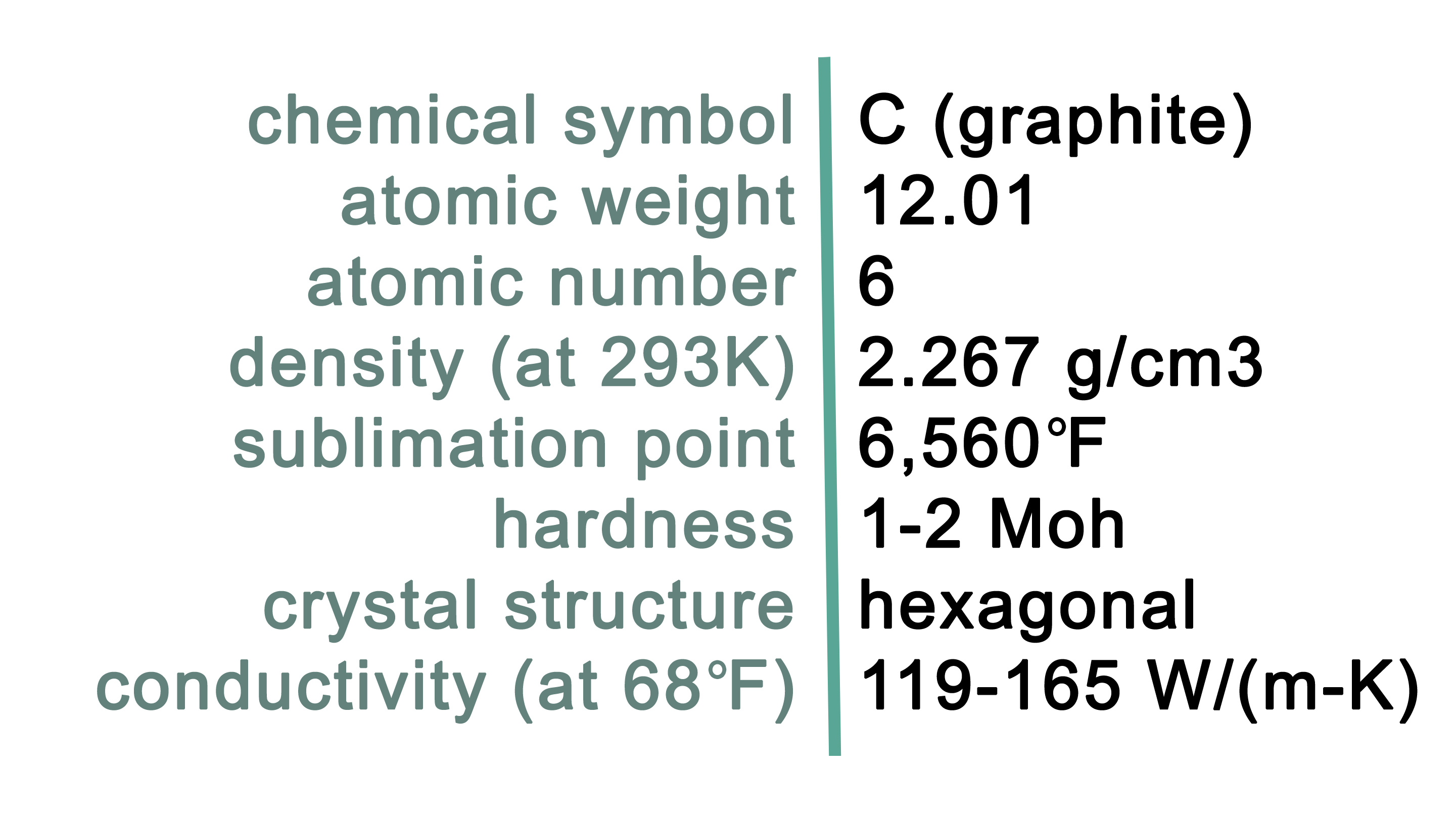
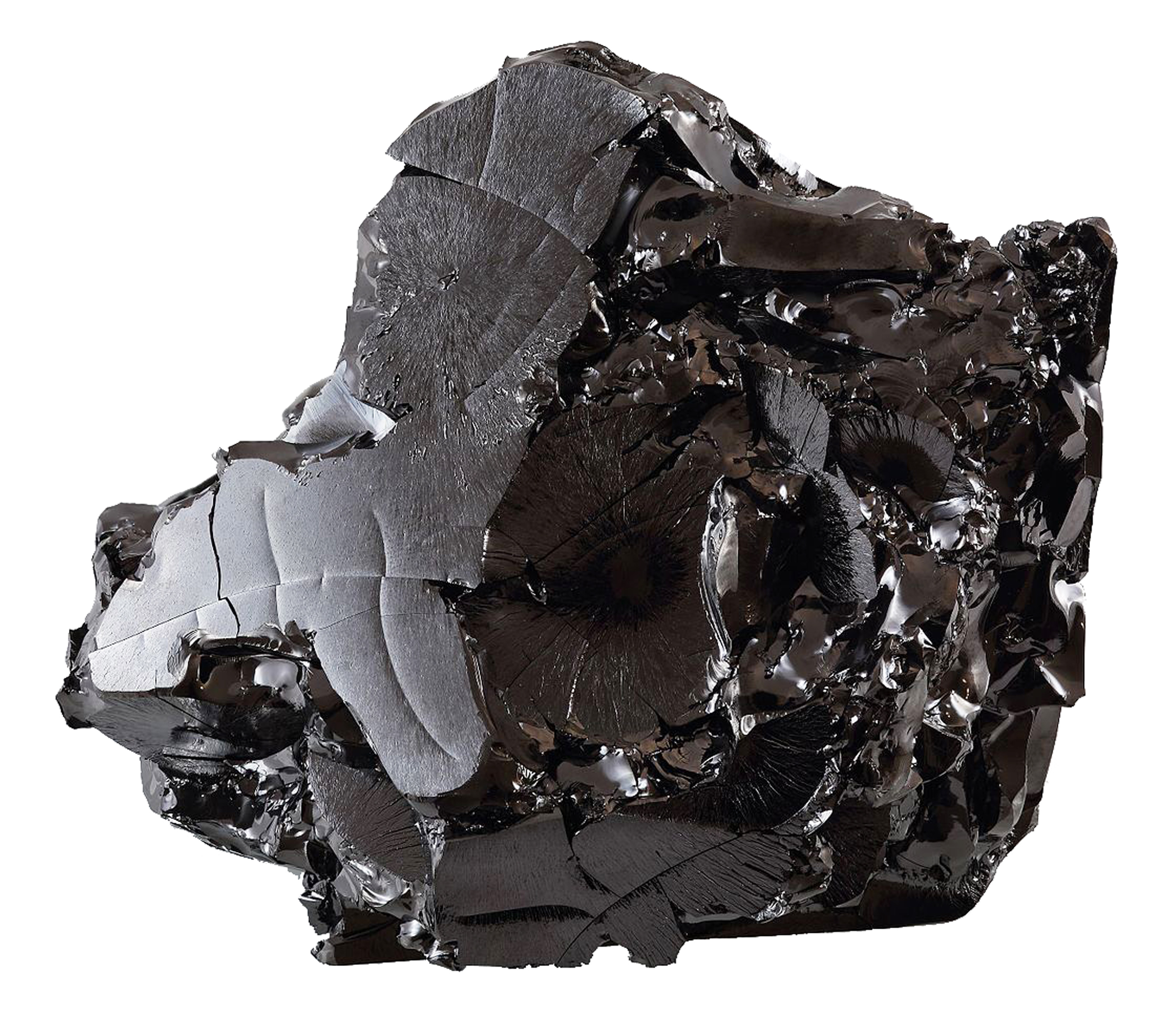

Graphite is used to produce vehicle brake pads due to its lubricity. Photograph courtesy of David Monniaux https://commons.wikimedia.org/wiki/File:Disk_brake_dsc03682.jpg
Uses of Graphite
Graphite has been utilized by humans since Neolithic times. Graphite is considered a "critical mineral" in domestic metallurgical applications that serve aerospace, defense, energy, electronics, telecommunications, and transportation technologies (Fortier and others, 2018). Graphite is used primarily in metallurgy for making steel. It has applications in the energy sector, for making electrodes, electrical motor brushes, batteries, fuel cells, and moderator rods in nuclear facilities. Graphite is used to produce high-temperature lubricants. It is also used for producing high-strength, lightweight composites for wind and water turbines. It is an essential material in the aerospace industry.

Graphite in pegmatite rock.
Courtesy of Scott Horvath, USGS
Graphite Geology
Graphite may be a component of many different metamorphic rocks. Deposits with economic potential were once sedimentary rocks rich in organic material that were metamorphosed by heat and pressure. Graphite commonly occurs as masses or flakes. Amorphous graphite results from the metamorphism of coal, flake graphite consists of crystal platelets of graphite in crystalline metamorphic rock that was once carbonaceous sediment, and lump or chip graphite refers to coarse crystals that form within fluid-filled veins and fractures in igneous and metamorphic rocks.
| Mineral System | Deposit Type | Geologic Provinces |
|---|---|---|
| Metamorphic | Amorphous flake in shear zone | Blue Ridge, Piedmont |
Table 2: Prospective graphite mineral systems, deposit types (Hofstra and Kreiner, 2020), and geologic provinces in Virginia
Graphite in Industry
Graphite is considered a critical commodity due to its usefulness and irreplaceability in certain applications. Graphite has not been mined in the United States since the 1950s; deposits are too small and not of a high enough grade. The U.S. does not maintain a supply of graphite in the National Defense Stockpile and is 100 percent reliant on imports from China, Mexico, Canada, Brazil, Madagascar, the United Kingdom, Japan, Sri Lanka, and Austria. However, recent interest and increases in federal funding through the Inflation Reduction Act and Defense Production Act has led to renewed exploration or development in Alaska and Alabama, respectively. Other projects were reported in Montana and New York (USGS, 2024). Concerns related to graphite mining include the inhalation of graphite and related silica particles during mining and processing, and acid-rock drainage from tailings (USGS, 2020).
In Virginia, minor deposits of graphite are found within metamorphic and igneous rocks in the Blue Ridge and Piedmont provinces. There have been many historic graphite prospects in Virginia. Although the majority of Virginia's deposits are too small for economic development, a couple of sites have been mined historically.
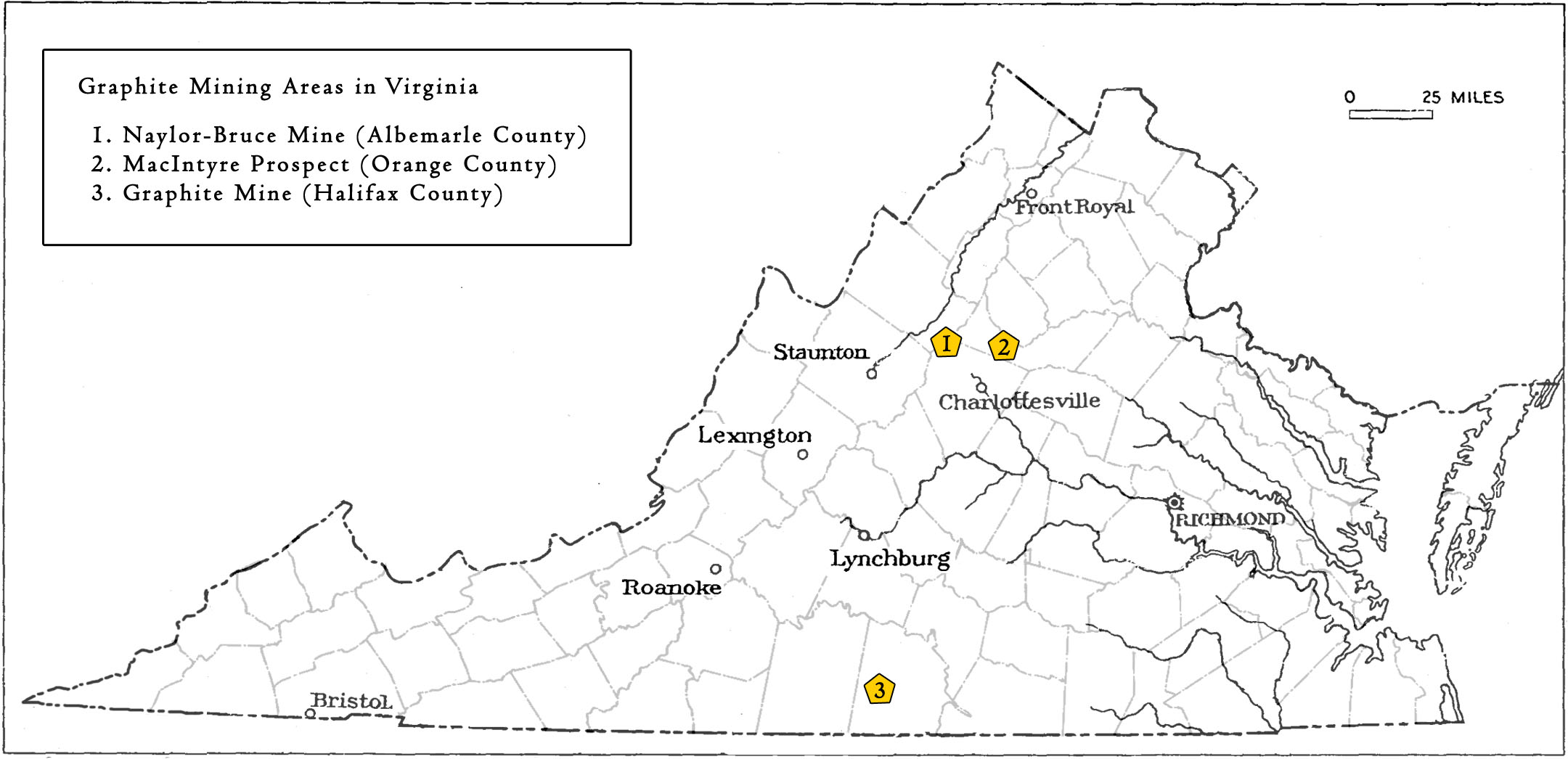
Graphite mines in Virgnia
The Naylor-Bruce Graphite Company owned a large plot of land that straddled portions of both Albemarle and Orange Counties and was worked during the early 1900s. The only mine that produced graphite was approximately 4 miles northwest of the town of Free Union in Albemarle County. It consisted of an old trench, with at least one 18 foot deep pit, and a shaft, that had been built into a shear zone in Blue Ridge basement granitoid gneiss within close proximity to local diabase dikes (possibly the source of carbon) (Johnson, 1964; Nelson, 1962). Samples analyzed reveal a 76.28 percent graphitic carbon content (Watson, 1907). During the early 1900s massive crystalline graphite was reportedly mined out of 13 inch to 8 foot wide veins (Watson, 1907; Engineering and Mining Journal, 1906). The mine was not open long, however, and closed without any production (Watson, 1905). Another exploratory shaft was dug during 1915 but by the 1930s, the shafts were flooded and only minor amounts of graphite observed in the tailings (Hunt, 1980).
At least one other graphite mine (referred to as Unnamed Mine) has been identified in Albemarle County. Supposedly an historic producer of graphite, although not much information is available for this site.
Orange CountyTwo miles north of the town of Eheart in Orange County, a small graphite mine was identified on the MacIntyre property in 1963. Here, phyllitic float with minor graphite was noted during a field investigation (Itter, 1963). An exploratory hole was drilled into underlying Lynchburg Group phyllite and meta-argillite. Samples from this drill hole reveal powder and micro-crystalline graphite present between 40 feet to a depth of 135 feet, with the most promising graphite observed between 80-115 feet depth (Itter, 1963). Itter (1963) also notes that what appeared to have been an additional old abandoned mine or prospecting trench was identified in this area, although no further information is available.
Halifax CountyA small graphite mine is located about 4 miles northwest of the town of South Boston in Halifax County. According to locals, this site operated before the Civil War, although not much is known. Samples from the overgrown pit collected in 1980 were reportedly largely graphite (Kreisa, 1980).
Selected References:
Engineering and Mining Journal (unsigned author), 1906, Graphite in Virginia: Engineering and Mining Journal, v. 81, p. 768.
Fortier, S.M., Nassar, N.T., Lederer, G.W., Brainard, J., Gambogi, J., and McCullough, E.A., 2018, Draft Critical Mineral List - Summary of Methodology and Background Information - U.S. Geological Survey Technical Input Document in Response to Secretarial Order No. 3359: U.S. Geological Survey Open-File Report 2018-1021, 15 p.
Giannini, B., 1986, Griffith property graphite prospect, personal communication notes, Virginia Division of Mineral Resources Economic Geology Files.
Gravatt, C.M., 1920, Geologic Map of a part of the Northeast Portion of Albemarle County, Virginia Showing Distribution of Graphite Schist. Virginia Geological Survey, University of Virginia.
Hofstra, A.H., and Kreiner, D.C., 2020, Systems-Deposits-Commodities-Critical Minerals Table for the Earth Mapping Resources Initiative: U.S. Geological Survey Open-File Report 2020-1042.
Hunt, W.B., III, 1980, Graphite in Albemarle County: Virginia Division of Mineral Resources, Economic Geology Files (unpublished UVA report under supervision of R.S. Mitchell), 10 p.
Itter, R.P., 1963, Field Investigation Memorandum - MacIntyre graphite prospect, Orange County, VA: Virginia Division of Mineral Resources, Economic Geology Files (unpublished), 3 p.
Johnson, S.S., 1964, Field Report - Graphite Mine, Albemarle County, VA: Virginia Division of Mineral Resources, Economic Geology Files (unpublished).
Kreisa, R.D., 1980, Geology of the Omega, South Boston Cluster Springs and Virginia Quadrangles, Virginia, Virginia Division of Mineral Resources Publication 5.
Mitchell, R.S. and Giannini, W.F., 1988, Minerals of Albemarle County, Virginia. Virginia Division of Mineral Resources, Publication 89.
Nelson, W.A., 1962, Geology and Mineral Resources of Albemarle County, Virginia Division of Mineral Resources, Bulletin 77.
Watson, 1907, Engineering and Mining Journal, Vol 81, p.768
Watson, T.L., 1905, Lead and Zinc Deposits of Virginia. Board of agriculture and immigration.
Watson, T.L., 1907, Mineral Resources of Virginia. The Virginia Jamestown Exposition Commission.
U.S. Geological Survey, 1913, Mineral Resources of the United States.
U.S. Geological Survey, 2020, Mineral Commodity Summaries 2020: U.S. Geological Survey, 200 p.
U.S. Geological Survey, 2024, National Minerals Information Center, Graphite Statistics and Information
U.S. Geological Survey, National Minerals Information Center, Graphite Statistics and Information
U.S. Geological Survey, Critical Mineral Resources of the United States - Economic and Environmental Geology and Prospects for Future Supply, Professional Paper 1802
U.S. Geological Survey, 2005, Mineral Resources Data System: U.S. Geological Survey, Reston, Virginia; Rocks and Minerals, (1963) 38:565-570; James L. Calver (1962) Geology and Mineral Resources of Albermarle County. Virginia Geological Survey; Bulletin 77.
The Mineral Industry, Its Statistics, Technology, and Trade, 1907, Edited by Richard Pennefather Rothwell, Joseph Struthers, David Hale Newland, Walter Renton Ingalls, Edward K. Judd. Volume 15
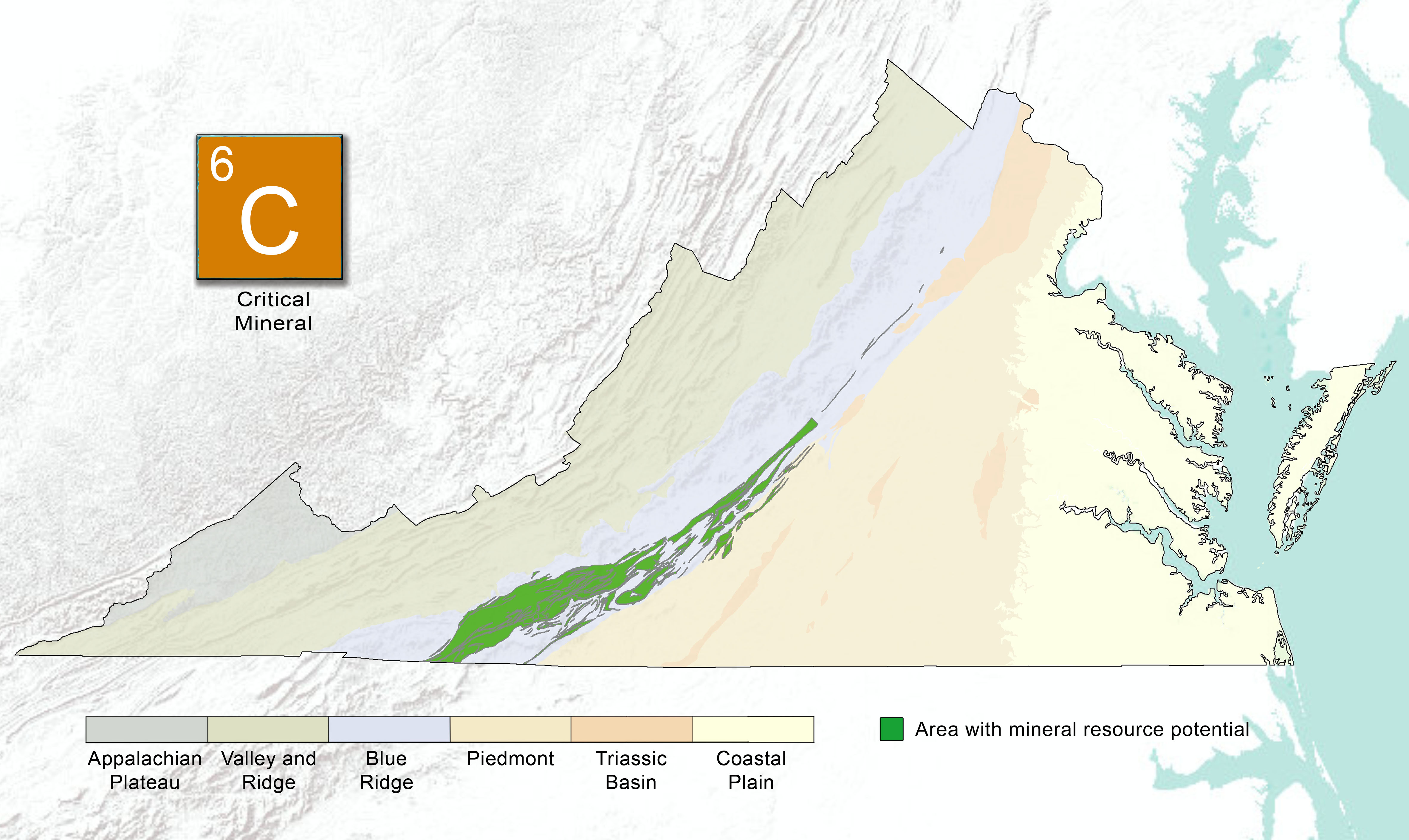
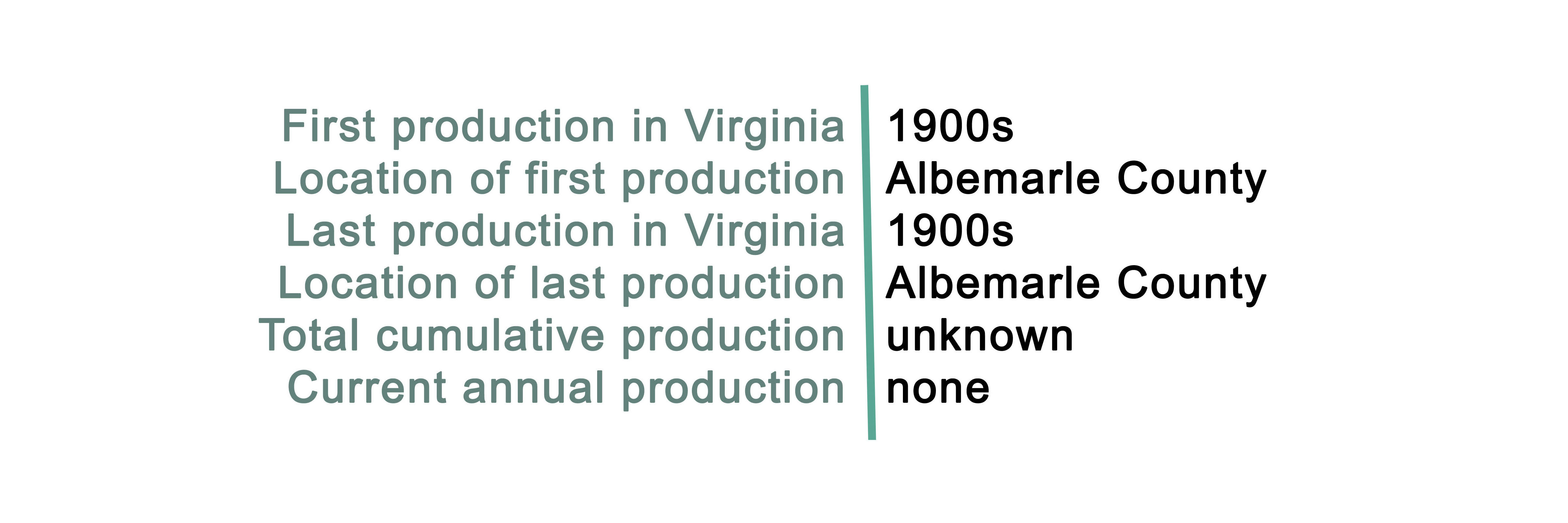
.jpg)
